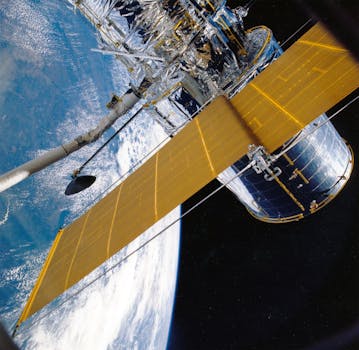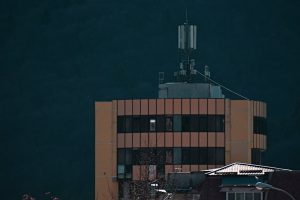
The Rise of Mega-Constellations: Latest Updates in Satellite Telecommunications
The rise of mega-constellations is revolutionizing Satellite Telecommunications, with thousands of satellites being launched into orbit to provide global internet connectivity. This new era in space technology is expected to transform the way we communicate, with Mega-Constellations playing a crucial role in bridging the digital divide and providing internet access to remote and underserved communities.
One of the key players in this field is SpaceX, which has already launched over 1,000 satellites as part of its Starlink constellation. The company plans to launch thousands more in the coming years, with the goal of providing high-speed, low-latency internet connectivity to users around the world. Other companies, such as Amazon’s Kuiper Systems and OneWeb, are also launching their own Mega-Constellations, with similar goals in mind.
Benefits of Mega-Constellations

The benefits of Mega-Constellations are numerous. For one, they have the potential to provide global internet connectivity, regardless of geographical location. This could be a game-changer for remote and underserved communities, which often lack access to reliable and affordable internet connectivity. Mega-Constellations could also provide a backup for traditional telecommunications infrastructure, which can be vulnerable to outages and natural disasters.
Another benefit of Mega-Constellations is their potential to provide high-speed, low-latency internet connectivity. This could be particularly useful for applications that require real-time communication, such as video conferencing and online gaming. With Mega-Constellations, users could enjoy fast and reliable internet connectivity, regardless of their location.
Challenges and Concerns

While Mega-Constellations offer many benefits, they also pose several challenges and concerns. One of the main concerns is the risk of space debris, which could be generated by the thousands of satellites being launched into orbit. This debris could pose a risk to other satellites and spacecraft, and could even contribute to the growing problem of space pollution.
Another concern is the potential for radio frequency interference, which could be caused by the thousands of satellites transmitting signals back to Earth. This interference could disrupt other satellite communications, and could even affect the performance of other telecommunications systems.
Regulatory Framework

Given the potential risks and challenges associated with Mega-Constellations, there is a need for a clear and effective regulatory framework. This framework should aim to mitigate the risks associated with space debris and radio frequency interference, while also promoting the development of Mega-Constellations and their potential benefits.
The International Telecommunication Union (ITU) is one of the key organizations involved in regulating Mega-Constellations. The ITU has established guidelines and regulations for the deployment of satellite constellations, including rules for frequency allocation and orbital slot assignment. The ITU is also working to develop new regulations and guidelines for the deployment of Mega-Constellations, including rules for space debris mitigation and radio frequency interference prevention.
See more:






